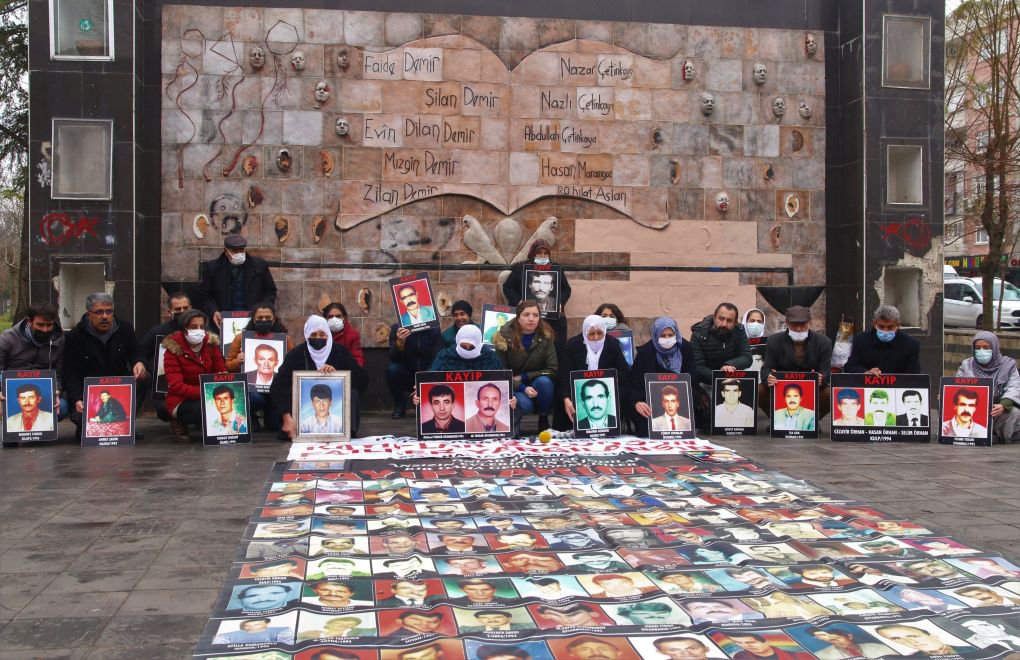Click to read the article in Turkish
Today marks the 30th anniversary of the Digor Massacre in the eastern province of Kars, which unfolded as a result of security forces opening fire following protests by villagers.
On August 14, 1993, during one of the most intense periods of conflict in the Kurdish regions, more than 20 villages saw thousands of people embarking on a march toward the center of the Digor district. The reasons for the march included constant house raids, problems in access to food, and authorities pressuring the local population toward forced cooperation by becoming village guards.
The march had begun from four different points. Two of these columns were compelled to turn back due to pressure from the gendarmerie. Over 3,000 people who arrived by vehicles were stopped by the police at the entrance of the district and were forced to disembark.
Silently, elderly, young, and child protesters walked for a few minutes before being met with intense gunfire from special operations forces positioned behind rocky formations.
According to official statements, as a result of the gunfire, 17 people, including children, lost their lives, while 63 were injured.
Judicial proceedings
Following the events, Mahmut Alınak, then an MP from the Social Democratic People's Party (SHP), and his colleagues prepared a report and submitted it to Hüsamettin Cindoruk, the speaker of the parliament at the time. Cindoruk forwarded the report to the Ministry of Justice, thus initiating a legal process.
After a three-year-long preliminary investigation by the Digor Public Prosecutor's Office, the case was sent to the Kars Chief Public Prosecutor's Office. Upon concluding the investigation, the prosecutor's office filed charges of "intentional murder" and "attempted intentional murder" against eight special operations police officers serving in the Kars Provincial Police Department.
The defendant police officers claimed in their defense that they were fired upon from within the crowd and were attacked with rocket launchers. However, upon examining the scene, only empty casings from the firearms used by the special operations forces were found.
The acquittals and the process at the ECtHR
Following over 40 hearings spanning years, on February 24, 2006, the court issued a verdict of acquittal for the accused police officers on the grounds of "legitimate defense."
After the pronouncement of the verdict, Tahir Elçi, the the head of the Diyarbakır Bar Association, who was killed by gunfire in Sur, Diyarbakır, in 2015, submitted an application to the ECtHR on behalf of the families of seven individuals who were killed in the massacre. The application cited "violation of the right to life," "ineffective investigation," and "prolonged trial."
As a result, the government acknowledged that the police had used excessive force during the incident. Following negotiations between the government, the families, and Tahir Elçi's legal representatives through the ECHR, a decision was made to award a total of 350,000 euros in compensation to the families of the seven deceased individuals. Other cases related to the incident are still ongoing at the ECHR.
A witness account
One of the witnesses of the massacre, Kasım Çağdavul, described the events of that day in a 2015 interview with the Dicle News Agency (DİHA), saying, "The state wanted us to become village guards. They always demanded that we take side with the state. They would raid our homes, saying, 'If you help the PKK, you will all die.' We couldn't bear the oppression anymore, so we decided to march. The elders of the villages came together and decided to march toward Digor.
"We began the march with thousands of people. We were only 2 kilometers away from Digor when the state's tanks blocked our path. The special operations forces were positioned. Even though we didn't have a single weapon in our hands, without saying a word, they showered us with bullets, without discrimination between young and old, men and women. They left many of us orphaned.
"Words are not enough to describe what we experienced that day. There is no definition for the pain. Gunshots rained down on us for hours. I miraculously survived the massacre. Others were not as lucky as me."
"I left my son in panic"
"I lost my sister and my uncle's sons and daughters. Despite the passing of all these years, we haven't forgotten what happened that day. We joined the march with our children and spouses against the oppression. Three times, I left my son in panic amidst the rain of bullets.
"Each time I went to retrieve him, I narrowly escaped being hit by bullets, which hit those in front of me. Not dying is a greater pain than carrying that agony for years. Dozens of people lost their lives in the massacre. They didn't even allow us to remove the wounded from the scene of the massacre.
"My sister had yellow, red, and green scarves on her head. The special operations forces deliberately targeted the Kurdish colors. Even though she was covered in blood, they wouldn't let us take her to the hospital.
"We managed to transport my wounded brother to the hospital by forcibly stopping a civilian vehicle. Even at the hospital, the police were torturing the wounded. My sister also lost her life in the hospital."
Those who were killed in the massacre: Gülcan Çağdavul (8), Selvi Çağdavul (14), Yeter Kerenciler (13), Necla Geçener (14), Zarife Boylu (15), Erdal Buğan (17), Zeynep Çağdavul (19), Hacer Hacıoğlu (20), Suna Çidemal (21), Fatma Parlak (22), Faruk Aydın (27), Cemil Özvarış (39), Gıyasettin Çalışçı (41), Hasan Çağdavul (43), Süleyman Taş (47), Nurettin Orun (80), Tütiye Talan (66).
(RT/VK)




